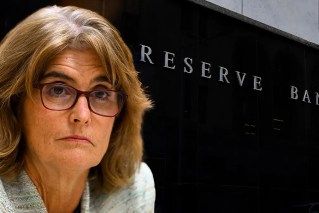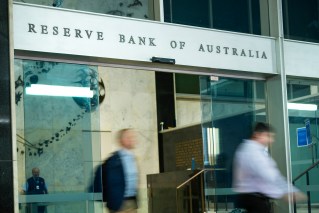RBA report highlights risks of axing responsible lending laws

An internal Reserve Bank report outlining the negative effects of long-term low interest rates has strengthened the case for retaining responsible lending standards, economists have argued.
In the research paper released on Friday under Freedom of Information laws, the RBA found an extended period of low rates could prompt families to take on too much debt if accompanied by “looser lending standards and/or optimistic assessments of risk”.
The authors noted previous RBA research that found house prices could soar by as much as 30 per cent in three years if borrowers believed a 1 percentage point reduction in the cash rate was “permanent”.
Since mid-2019, the central bank has cut the cash rate by 1.4 percentage points, with RBA governor Philip Lowe suggesting the current record low of 0.1 per cent will remain until 2024.
Tweet from @abc730
However, the research paper says the positive effects of low interest rates on consumer spending and investment – through the wealth effect and increased collateral for borrowing – outweigh the potential risks to financial stability.
“High unemployment is the biggest risk to the economy, balance sheets and medium-term financial and macro stability,” the paper states.
“Lower interest rates can help reduce this risk.”
Private analysis contrasts public statements
The research paper contrasts public comments made by the RBA, which supports the federal government’s bid to scrap responsible lending laws.
The Coalition’s proposal would shift the onus from “lender beware” back to “borrower beware”, which would allow borrowers to receive a loan with fewer background checks.
But critics believe the changes would increase the risk of vulnerable households being granted unaffordable loans.
If successful, the move would contradict the first recommendation made by the Hayne Banking Royal Commission.
Governor Lowe told the Standing Committee on Economics in September that onerous lending restrictions were stifling economic growth and the flow of credit.
“The pendulum has probably swung a bit too far to blaming the bank if a loan goes bad because the bank didn’t understand the customer,” Dr Lowe said.
Yet in spite of the emphasis on “lender beware”, house prices increased 3 per cent in 2020 despite the nation enduring its worst recession since the 1930s, CoreLogic data shows.
And low-interest rates have also pushed the value of monthly home loan approvals to record highs.
Risky lending currently a ‘medium-term concern’
Independent economist Saul Eslake said although the report was pointing to “medium-term concerns” – with the number of owners taking on high loan-to-value (LVR) loans proportionally low – he noted the RBA had its eyes on New Zealand’s credit-fuelled housing bubble.
If responsible lending laws were watered down and regulators failed to intervene, he said, Australia could experience a similar situation to its trans-Tasman neighbour.
“I don’t think having a whole lot of loans at high LVRs or high debt-to-income ratios is a good thing, and I’m not one who thinks rapidly rising house prices is always a good thing,” Mr Eslake told The New Daily.
“If responsible lending laws remained, that would likely be a constraint on risky lending and [regulators] would be less likely to reintroduce some of the regulations in 2014-15, when there were restrictions on the growth of investor mortgage portfolios and limits on interest-only loans.”
According to OECD, the ratio of household debt to disposable income in Australia sits at 210 per cent, which means families owe lenders more than twice what they earn annually.
When compared to GDP, the Bank for International Settlements found Australian household debt rose to 121.4 per cent of the nation’s economic output in the July quarter, second only to Switzerland.
Question marks over what happens when rates rise again
University of Queensland economics professor John Quiggin said the RBA paper was clearly at odds with its support of the federal government’s proposed dismantling of lending standards.
But he said previous concerns that hitting a particular level of debt would prove to be catastrophic had thus far not proven to be “such an issue”.
“The obvious question is what happens if there’s a big rise particularly in real interest rates (after inflation), but potentially also in nominal interest rates, which might present some of these households with difficulty,” Professor Quiggin told The New Daily.
Tweet from @IFM_Economist
Market Economics managing director Stephen Koukoulas told The New Daily it was “pretty absurd” that the RBA now considered household debt a problem after it had grown exponentially for “30, or 40 or 50 years”.
“[High household debt] has not been the catalyst for previous recessions – whether the one we experienced last year or the one in 1990,” he said.
“If you are concerned about risk attached to levels of lending, [Treasury] should encourage banks and financial institutions to lend more responsibly.”
Treasury did not respond to The New Daily’s request for comment.











